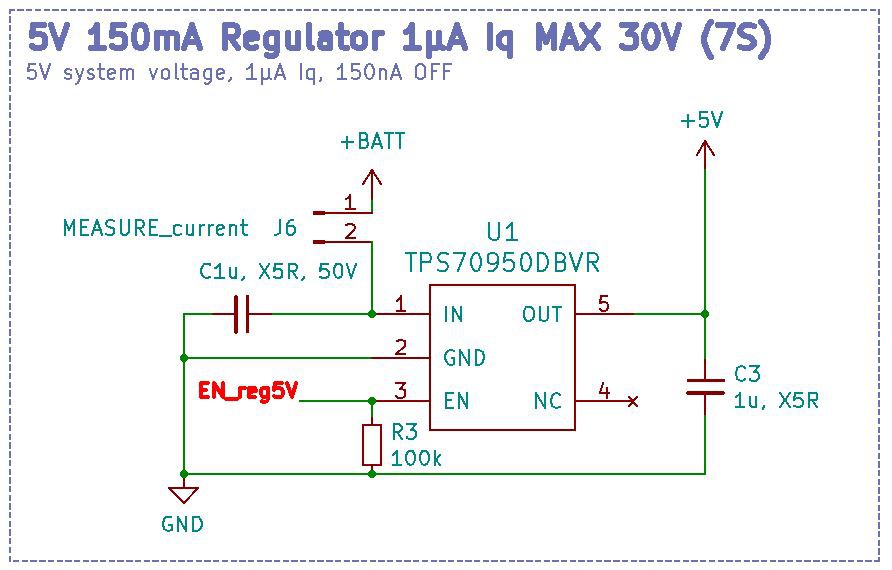Aaaaaaaaaah!
After I did the first tests with the first board (and writing my very happy post about it) the next day I connected the board to a fully charged 6S LiPo battery again and got... the magic smoke.

After inspection of the board it was obvious that the regulator blew. I double checked all the parts in the schematic, found no obvious error and re-worked the regulator and Atmega328. It worked a few times after that.
A few days later I even did rests with the same LiPo and a 150W electronic load to test the MOSFET for heat dissipation. Worked like a charm.
Then on some random re-connection of the battery blew the regulator (and micro) again. DOH!
Tests I did
So, I did solder just the TPS70950DBVR on an breakout board, added the caps needed (50V rated, low ESR MLCC) and did some tests again.
Leaving EN floating (according to the datasheet) and with no load connected, the regulator seems to be super sensitive to repeated quick connection of 30V with a high current capability (DSP5005 srt to 30V/5A).
It seems like the inrush-current can kill the regulator?! At least that's what happened a few times. I'm through 6 of my 10 regulators now...
Did the same tests with an 100 ohm load resistor to simulate 50mA output current and saw some heavy heat-up of the regulator with a over-temp shutdown by the regulator. With 20mA output it got quite hot but didn't shut down.
Connecting the 30V current-limited to like 100mA seems to reduce the chance of the regulator popping.
Conclusion
I really can't reproduce the error reliably... The inrush-current theory is just that, a theory. I tried several other things which I thought could be the reason for failing, like: too high enable voltage, wrong caps, other style of caps, wiring, ...
To sum things up: the boards are NOT going to production any time soon. Did check several other regulator options but can't seem to find any good one yet.
 Jan
Jan
Discussions
Become a Hackaday.io Member
Create an account to leave a comment. Already have an account? Log In.